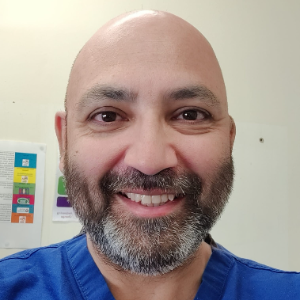Nasalis Muscle
The Nasalis Muscle is a facial muscle that plays a crucial role in facial expression and respiration. Comprising two distinct parts, the transverse and alar portions, the nasalis muscle is located in the nose region. The transverse portion spans the bridge of the nose, while the alar part surrounds the nostrils. Together, they contribute to the dynamic movements of the nose.
The primary function of the nasalis muscle is to control the dilation and contraction of the nostrils, influencing facial expressions, particularly during activities such as sniffing or expressing disgust. The muscle also aids in respiration by adjusting the size of the nasal openings, facilitating airflow regulation. In facial aesthetics, the nasalis muscle is relevant to the appearance of the nose, contributing to the overall expression and character of an individual's face. The intricate interplay between the nasalis muscle and other facial muscles allows for a wide range of expressive movements, making it a key component in non-verbal communication. Dysfunction or imbalance in the nasalis muscle can impact facial symmetry and expression. Understanding the anatomy and function of the nasalis muscle is essential for professionals in fields such as plastic surgery, dermatology, and facial aesthetics, as it influences various aspects of facial appearance and function.

Stephen S Tower
University of Alaska Anchorage, United States
Marcos Brioschi
American Academy of Thermology, United States
Wagih El Masri
Keele University, United Kingdom
Arif Akkok
Lake Erie College of Osteopathic Medicine, United States
Akash Ganguly
Warrington and Halton Hospitals NHS FT, United Kingdom
Sajid Ali
The Dudley Group NHS Foundation Trust, United Kingdom




Title : The UK profemur recall and implant cobaltism
Stephen S Tower, University of Alaska Anchorage, United States
Title : The tomographic phenotype and the genotype of wormain bones
Ali Al Kaissi, National Ilizarov Medical Research Center for Traumatology and Orthopaedics, Russian Federation
Title : New treatment of muscle contracture and joint contracture through muscle regeneration with mitochondrial dynamics
Ki Ji Lee, Busan Medical University, Korea, Republic of
Title : New treatment of sarcopenia through muscle regeneration with mitochondrial dynamics
Ki Ji Lee, Busan Medical University, Korea, Republic of
Title : The prevalence and association of self-reported depression symptoms with musculoskeletal pain and quality of life among pregnant women
Youssef Masharawi, Tel Aviv University, Israel
Title : Bipolar hemiarthroplasty under local anesthesia (2%)
Ketan Karabhai Parmar, Aayush Multispecialty Hospital, India